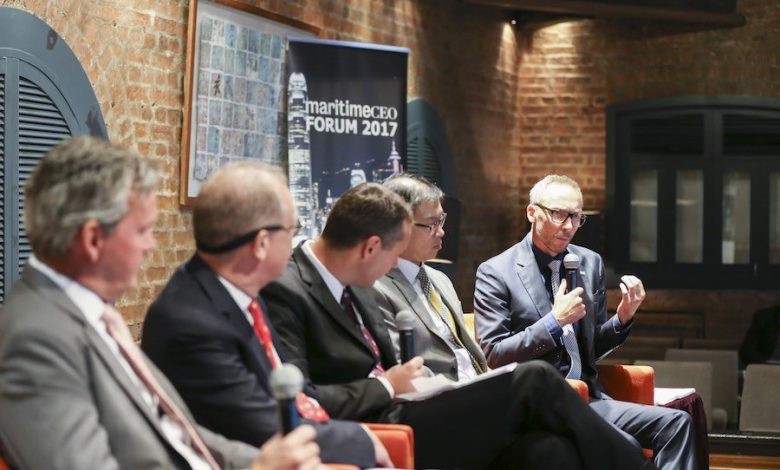Tanker owners need to be cautious on the supply side: Maritime CEO Forum

Caution was the most palpable theme emanating from the tanker session at this week’s Maritime CEO Forum in Hong Kong. While demand was seen to be picking up, panellists stressed their concern on the supply side.
Frans Van de Bospoort, managing director of ship finance in the eastern hemisphere for DVB Bank, maintained that despite the ongoing spectre of oversupply the crude sector was on the road to recovery.
“2018 will be dull, and 2019 will be brighter,” said Van de Bospoort.
Peter Sand, chief shipping analyst at BIMCO, agreed with Van de Bospoort’s view, adding that China has been greatly supporting crude shipping demand.
“In 2017, we have seen a supply growth of 6-7% set off against a demand growth of 2-3%. When we look at 2018, we certainly have seen strong support for crude tankers. The supply side will be pretty fixed and we will see a continuous level of demolition,” Sand said.
According to Sand, China itself has provided employment of 44 VLCCs in the first eight months of this year and in the same period the country imported 60% more crude oil in comparison with the year before.
“China’s move to acquire a large amount of crude oil transport capacity might worry some international shipowners. But the fact is that China remains the major demand generator of crude oil and the situation will last,” Sand said, suggesting there was room for international owners to share this growth.
In the near term, however, Sand believes the challenges for crude tankers will continue.
“By 2018, about 4.4% of the tanker fleet will be over 20 years old, which will force a new round of scrapping,” said Henrik Hartzell, managing director of Heidmar (Far East).
Hartzell reckons the tanker market will start to pick up from 2019 with 2020 viewed as a very solid year for earnings and suezmax with the best growth potential.
Jack Hsu, managing director of Oak Maritime, was not so sure with the suezmax prediction, favouring prospects for VLCCs instead.
“To some extent, lots of suezmax transactions have been taken over by the VLCCs, there is a dynamic between the two because they are competing with each other. But fundamentally the VLCC market we see with being China-centric, is more favourably than suezmaxes.”
The Maritime CEO Forum took place in the Foreign Correspondents’ Club in Central, Hong Kong with sessions on tankers, bulkers and crewing. It is set to return to Singapore’s Fullerton Hotel on March 13 next year.
The event was sponsored by Anglo-Eastern, Cobham, Dualog, DVB Bank, Liberian Registry, RightShip, Veritas Petroleum Services, and V.Ships Agency.

There is no such thing as a tanker owner who is cautious on the supply side.
Anyone who is cautious on the supply side will stop being a tanker owner.
“VLCCs are for the brave and the strong” – Dr Helmut Sohmen (who should know…)